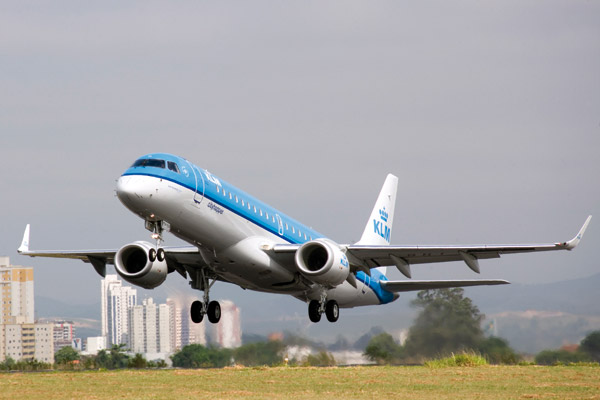The following article is from our September 2008 issue.
Lufthansa Strikes
The airline is facing tough times ahead – By Jens Flottau
While the warning strikes by pilots are officially over pay demands, the real problems are much deeper rooted and have been pending for years.
If there was any doubt left that pilots are the most powerful group within an airline, just ask Lufthansa. The airline has just managed to find a new pay deal with its ground workers and was hoping for more peaceful times during the middle of Germany’s busy summer season.
It was the pilots at regional subsidiaries, Lufthansa CityLine and Eurowings, who made clear by walking off their jobs for 36 hours again earlier this month, that Lufthansa is likely facing more tough times before all the issues are settled. While the warning strikes are officially staged over pay demands, the real problems are much deeper rooted and have been pending for years.
The conflict between Lufthansa and its crews is a classic showdown over the so called “scope clauses.” In 1992, when the airline narrowly avoided bankruptcy, pilots helped with significant pay concessions. However, in return they reached an agreement with management that in the future, aircraft with more than 70 seats should be operated by mainline pilots and regional partners could fly no more than 6 percent of Lufthansa’s total capacity.
So far so good, at least for the time being. In 1992, there were hardly regional aircraft with more than 70 seats and flying 50-seaters seemed perfectly feasible. Times have changed significantly since then: Fuel prices are now about five times as high as they used to be and today, there are numerous larger aircraft at hand. Airlines are keen to spread the cost base over more seats to remain profitable – as a result, there is a good economic incentive to fly larger jets.
That is why Lufthansa ordered 30 Embraer 195s seating 115 passengers. According to the 1992 deal, they would have to be operated by Lufthansa’s much better paid mainline pilots. But the company argues that smaller aircraft are no longer economically viable for its affiliate CityLine. So for the unit to be able to survive, it would have to move up to flying larger jets. While the economic rationale is clear (and has been demonstrated in industry trends for many years), Lufthansa failed to negotiate the changes with pilots beforehand. In the past three years, both sides met twice over the issue and did not even come close to a solution.
Pilot union Vereinigung Cockpit (VC) argues that there is a binding contract that cannot be cancelled by one party alone. If it agrees to what it considers to be at least an indirect worsening of working conditions (because the larger jets are to be operated by lower paid pilots), it wants something in return.
Lufthansa argues that aircraft size on average is up across the board. But that is not entirely true: The Embraer 195s could replace similarly sized Boeing 737-500s and the airline also expressed its interest in ordering up to 60 Bombardier C-series aircraft that seat 110-130 passengers, again the same as the older Boeing jet.
VC therefore demands that regardless of where the aircraft are flown, pilots would have to be paid the same as at Lufthansa mainline. If they pushed through a pay deal at CityLine that comes close to the mainline level (around 30 percent more), then Lufthansa has announced it will wind down operations of CityLine leading to the loss of several thousand jobs.
Matters are made worse by the fact that there isn’t much time left to find a solution. The first of the 30 aircraft will arrive early next year and with significant time needed to prepare for the operation of a new fleet, Lufthansa has already found alternative homes for the first 10 aircraft.
Five are going to its Italian subsidiary Air Dolomiti to fly European routes out of Alitalia’s former hub in Milan-Malpensa. Another five are almost certainly placed with regional airline Augsburg Airways, which has no shareholder links to Lufthansa and therefore does not fall under the 1992 agreement.
To hope that outsourcing will solve the problem may very well prove short sighted. According to industry sources, VC is already preparing its strategy for the upcoming pay negotiations at Augsburg where it represents pilots, too. The small company will likely face astronomical demands that could destroy its low cost base.
Lufthansa’s internal problems would then just move outside of the group. And unlike ground workers, pilots can easily ground an airline within a very short time: They just don’t show up for work and every thing stops instantly. VC is now even threatening to ground Lufthansa mainline and not only its regional affiliates although the company considers that illegal and threatens to ask for damages.
Even if the increasingly bitter conflict with the pilots is resolved, the strike story may not be over yet. Unabhängige Flugbegleiter Organisation (UFO), a union representing flight attendants, has already announced that it will not accept the 7.4 percent pay increase negotiated by rival Verdi for ground staff and a small number of cabin crew. When a new collective bargaining agreement becomes due in January, UFO will demand 15 percent more money or otherwise call its members to go on strike.





